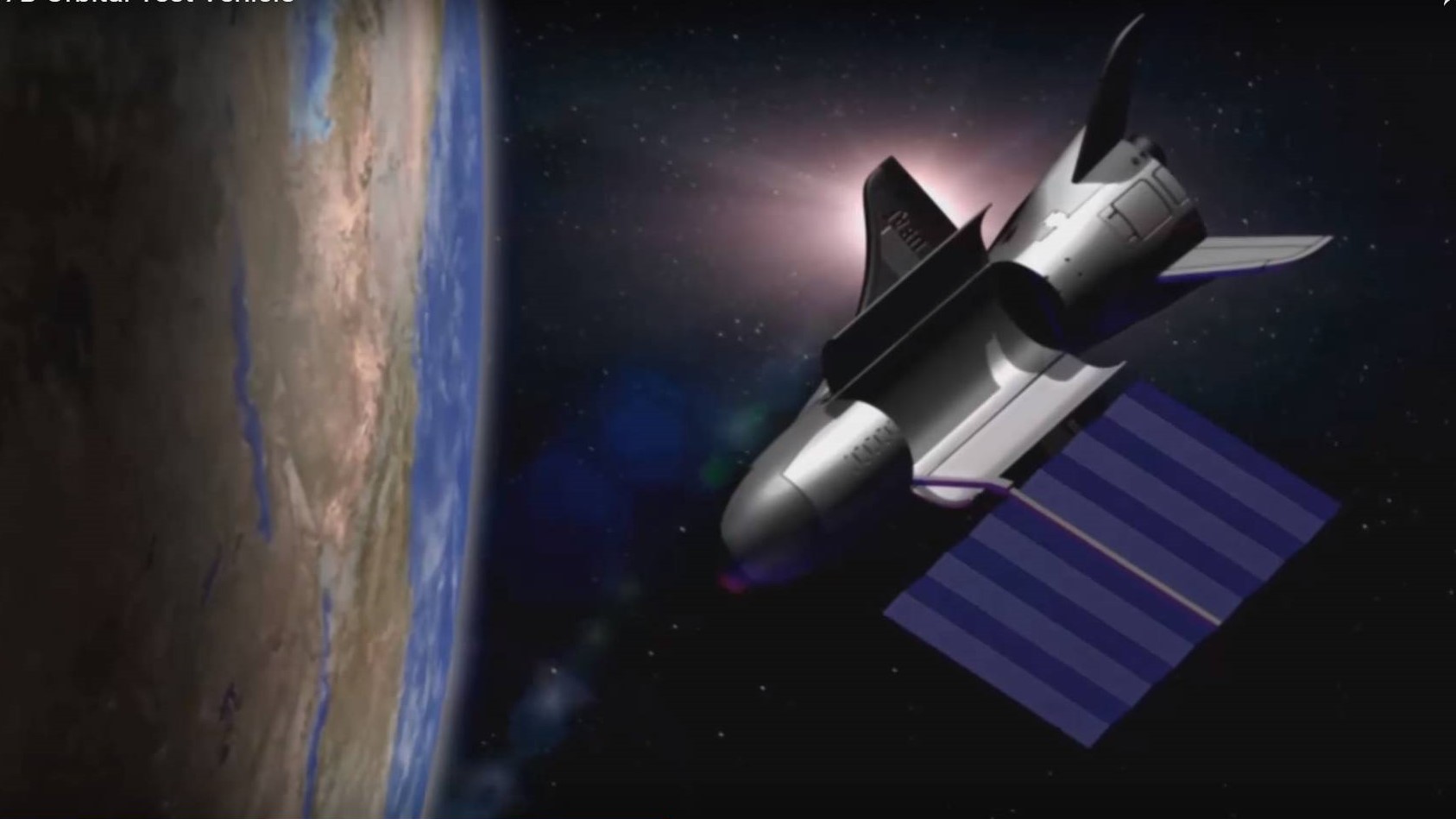Mysterious X-37B Military Space Plane Nears 1 Year in Orbit


The U.S. Air Force's X-37B miniature space plane has winged past 340 days in orbit performing secretive duties during the program's fifth flight.
The robotic craft's latest mission, known as Orbital Test Vehicle-5 (OTV-5), kicked off on Sept. 7, 2017, with a launch atop a SpaceX Falcon 9 rocket from NASA's Kennedy Space Center (KSC) in Florida.
As usual, Air Force officials have revealed few details about OTV-5. But we do know that one payload flying aboard the X-37B this time around is the Advanced Structurally Embedded Thermal Spreader, or ASETS-11. Developed by the U.S. Air Force Research Laboratory, this cargo is testing experimental electronics and oscillating heat pipes for long durations in the space environment. [The X-37B Space Plane: 6 Surprising Facts]
Record-setting history
The classified X-37B program "fleet" consists of two known reusable vehicles, both of which were built by Boeing. Looking like a miniature version of NASA's now-retired space shuttle orbiter, the military space plane is 29 feet (8.8 meters) long and 9.6 feet (2.9 m) tall, with a wingspan of nearly 15 feet (4.6 m).
The X-37B has a payload bay about the size of a pickup-truck bed, which can be outfitted with a robotic arm. The space plane has a launch weight of 11,000 lbs. (4,990 kilograms) and is powered on orbit by gallium-arsenide solar cells with lithium-ion batteries.
Each X-37B mission has set a new flight-duration record for the program:
- OTV-1 began April 22, 2010, and concluded on Dec. 3, 2010, after 224 days in orbit.
- OTV-2 began March 5, 2011, and concluded on June 16, 2012, after 468 days on orbit.
- OTV-3 chalked up nearly 675 days in orbit before finally coming down on Oct. 17, 2014.
- OTV-4 conducted on-orbit experiments for 718 days during its mission, extending the total number of days spent in space for the OTV program to 2,085 days.
How long OTV-5 will stay aloft is unknown. Whenever it comes down, the robotic vehicle is likely to land at KSC's Shuttle Landing Facility, as the OTV-4 mission did back on May 7, 2017. That was a first for the program. All prior missions had ended with a tarmac touchdown at Vandenberg Air Force Base in California.
Breaking space news, the latest updates on rocket launches, skywatching events and more!
Ground tracks
Ted Molczan, a Toronto-based satellite analyst, told Inside Outer Space that OTV-5's initial orbit was about 220 miles (355 kilometers) high, inclined 54.5 degrees to the equator. "Its ground track nearly repeated every two days, after 31 revolutions," he said.
On April 19, the space drone lowered its orbit by 24 miles (39 km), which caused its ground track to exactly repeat every five days, after 78 revolutions, Molczan said — a first for an OTV mission.
"Repeating ground tracks are very common," Molczan added, "especially for spacecraft that observe the Earth. That said, I do not know why OTV has repeating ground tracks."
Space Force ties?
Does the X-37B program fit into the Trump administration's call for a Space Force?
"Ironically, the X-37B is exactly the type of program — toward giving the U.S. flexibility of operations in space — that seems to be prompting the current push for a Space Force, yet are already underway," said Joan Johnson-Freese, a professor in the National Security Affairs Department at the Naval War College in Newport, Rhode Island.
Leonard David is author of "Mars: Our Future on the Red Planet," published by National Geographic. The book is a companion to the National Geographic Channel series "Mars." A longtime writer for Space.com, David has been reporting on the space industry for more than five decades. Follow us @Spacedotcom, Facebook or Google+. This version of the story published on Space.com.

Leonard David is an award-winning space journalist who has been reporting on space activities for more than 50 years. Currently writing as Space.com's Space Insider Columnist among his other projects, Leonard has authored numerous books on space exploration, Mars missions and more, with his latest being "Moon Rush: The New Space Race" published in 2019 by National Geographic. He also wrote "Mars: Our Future on the Red Planet" released in 2016 by National Geographic. Leonard has served as a correspondent for SpaceNews, Scientific American and Aerospace America for the AIAA. He has received many awards, including the first Ordway Award for Sustained Excellence in Spaceflight History in 2015 at the AAS Wernher von Braun Memorial Symposium. You can find out Leonard's latest project at his website and on Twitter.
